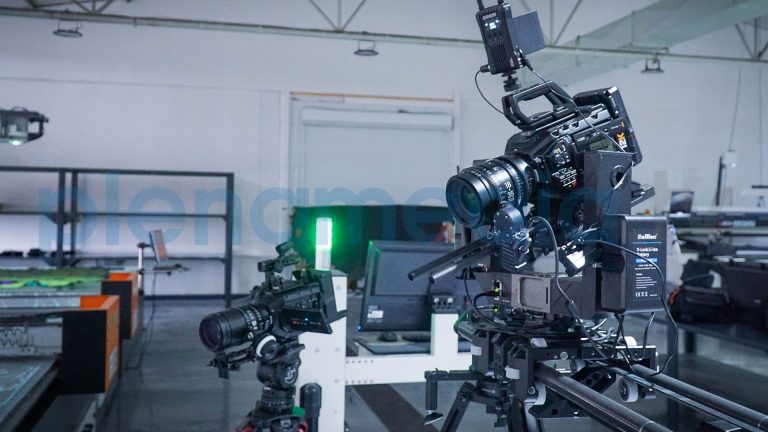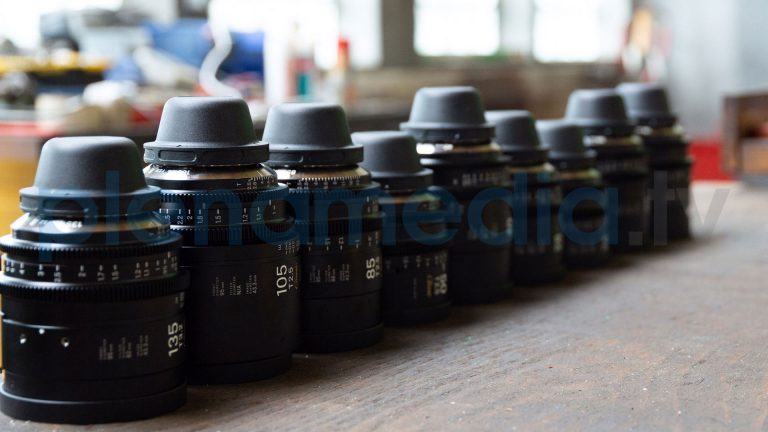TERMINOLOGY
WHAT IS HDTV?
HDTV stands for High Definition television – high-resolution TV. HDTV has greater levels of vertical, horizontal or temporal resolution compared to the Standard Definition television (SDTV).
WHAT IS FULL HD?
Full HD is the version of HDTV with the highest resolution levels. The term HDTV also includes the category of “HD ready”. HD ready supports a minimum resolution of 1280 x 720 pixels; HD 1080p or Full HD 1920 x 1080 pixels – resulting in a sharper image. However, the sharpness of the picture on the receiving device will also depend on the diagonal measurement of its screen and its distance from the viewer.
WHAT IS 4K?
The term 4K refers to the resolution involved, which is about 4,000 pixels in width. Most of the time, a resolution of 3,840 x 2,160 pixels is used. This resolution is also known as Ultra High Definition (UHD). The term 4K originally comes from the field of cinema, where a resolution of 4,096 x 2,160 pixels is used. At 4K, resolution levels are four times higher than HD ready and two times higher than Full HD 2, making the 4K image appear even sharper.
WHAT IS 4K?
This stands for even higher resolutions and even sharper images. Particularly in promotional, trade fair and product films and especially in 3D animations and 3D visualisations, fine details will still appear blurry at 720p (SDTV) and 1080p (HD) resolutions. However, 8K will give a clean image at a 1:1 scale on a video wall, corresponding to physical viewing with the human eye.
DOES IT MAKE SENSE TO RENDER IN 4K VIDEOS THAT HAVE BEEN PRODUCED IN 12K?
The resolution level is extremely important for displaying the fine details that are unique to our clients’ designs. Many fine details are then clearly recognisable that would not be visible at all at lower resolutions. The problem is that video files of 4K-UHD, 8K and 12K films are larger by a factor of 8, 16 and 24 respectively as compared to full HD films. Because of the size of the files and the resolution involved, it makes sense to render them in 4K or Full HD.
REASONS FOR PRODUCING A VIDEO IN 4K, 8K OR 12K
Again and again, we are asked by our customers why we produce the videos in 4K and not full HD, even though the device can only reproduce full HD quality levels. And the next question: why produce a film using a 12K video camera when it is then rendered down to 4K format?
REASONS FOR PRODUCING A VIDEO, PROMOTIONAL FILM, TRADE FAIR FILM, EVENT FILM OR LIVESTREAM IN 4K
- High-quality images, greater sharpness, optimum quality for video production
- Trade fair films, event films and promotional films in 4K quality are ideally suited for reproduction on large screens
- In 4K format, the higher frame rate results in fluid images for events featuring rapid movement during both live broadcasts and in video productions
- Videos produced in 4K always contain stills (static images). Thanks to the high film quality and therefore image quality involved, such images can be used at any time for promotional purposes, for printing or on a website
- 4K quality is also more suitable for archiving purposes, as is 8K
- Archiving in 4K or 8K represents an investment in the future for your raw video material. Nowadays, 8K and 12K video walls (even if not yet standard) are already in use at events. This means that it will still be possible to use the raw material to produce films that meet current playback standards
- Production in 4K allows for options in post-production that would otherwise require the use of two cameras
- Stabilisation of images is accompanied by a decline in quality (loss of resolution). For films produced in 4K, there is so much redundant resolution that images can be stabilised without significant loss.
REASONS FOR PRODUCING A PROMOTIONAL FILM, EVENT FILM, COMMERCIAL OR EVENT FILM USING A 12K CAMERA
- The human eye is more sensitive to changes in brightness than it is to changes in colour. The process of “downsampling” from 12K to 4K maintains brightness to the detriment of the colours red and blue. In other words, the data compression that takes place does not lead to any noticeable loss of quality in the video
- Production in 12K represents an investment in the future
- Downsampling allows for viewing at the current standard quality levels with almost no impact on the high quality of the images
- Significantly lower image noise
- Ideal for films made in low-light conditions
- The quality of the images is a closer match to how an object is perceived by the human eye
- Small details are reproduced much more sharply – something especially important for product films, trade fair films and green screen turntable recordings
- Easier post-production
- Better still images for printing, advertising and websites
WHICH CAMERA MODELS DOES THE PLENAMEDIA.TV FILM TEAM WORK WITH?


Our team produces trade fair films, event films, promotional films and livestreams using the Blackmagic Ursa Mini Pro 4.6G2 camera. Lenses are critical to the quality of the video: for your high-quality films, we utilise Sigma Zoom lenses with outstanding T2 light intensity throughout the whole focal length range. The SIGMA high-speed zoom line includes an 18-35mm T2 lens and a 50-100mm T2 lens. The product line is optimised for high-resolution cinematography and is specially designed for 6K-8K recordings. Sigma fixed focal length lenses: these ten fixed focal length lenses cover the range from 14mm to 135mm, each offering a light intensity of between T1.5 and T2. Thanks to their exceptional image quality, they can easily film at fixed focal lengths. In addition, they are compatible with full format and are amazingly compact. With this complete set of ten lenses designed for 6K–8K filming, the FF High Speed Prime line means that no change of lighting is required for different cuts, bringing cinematographic performance to a whole new level.

ZEISS Cinema Zoom lenses are precision engineered within the tightest possible tolerances. This guarantees you excellent image quality with low distortion, high resolution and excellent colour rendition for crisp, striking pictures. High resolution and contrast; ready for 8K and beyond up to 12K. We produce commercials, promotional films, recruitment films and livestreams using the Blackmagic 12K camera and the above-mentioned lenses.
plenamedia.tv and its filming team can produce videos for all occasions, which you can also use again and again for the newest and most topical purposes.
WHICH IS BETTER? VIDEO FILMED ON 4K MOBILE DEVICES OR USING THE BLACKMAGIC 12K CAMERA? AND HOW DO THEY COMPARE WITH A 4K STANDARD VIDEO CAMERA?
Mobile phone videos are, at best, acceptable on the smartphone display and for use in still pictures the size of a postcard. The small image sensors used are hardly suitable for showcasing the subject being filmed, because of their low depth expansion. There is no option to change lenses or obtain detailed images with natural brightness profiles even in low light, and the colours are less faithful. Neither are there any high-quality cine lenses available for smartphone cameras.
With its 80 MP resolution per frame, the Blackmagic 12K, in contrast, can be used in scenarios ranging from film production for large-format projections to studio applications, special effects work, and scenic productions. We currently know of no other cine camera with this resolution potential.
With the Blackmagic camera, the 12K braw files can be accessed on a laptop on a 4K timeline. This is made possible by Blackmagic’s highly effective implementation of the RAW format. In addition, the colour science used is well balanced, enabling seamless matching with footage recorded on the 4.6K Ursa Mini Pro.
While 4K videos can be produced at low cost using smartphone cameras, this results in major shortfalls in quality. The mere fact that lenses can be changed on standard camcorders, combined with their larger sensors and higher luminance levels, make them a superior option. What’s more, they can be bought for a moderate price. But clearly superior – and an investment in the future – are videos shot in 4K to 8K quality using high-resolution, light-intensive cine lenses. These come at a much higher purchase price, of course. These are the reasons why we produce high-quality films using the Blackmagic 12K.
